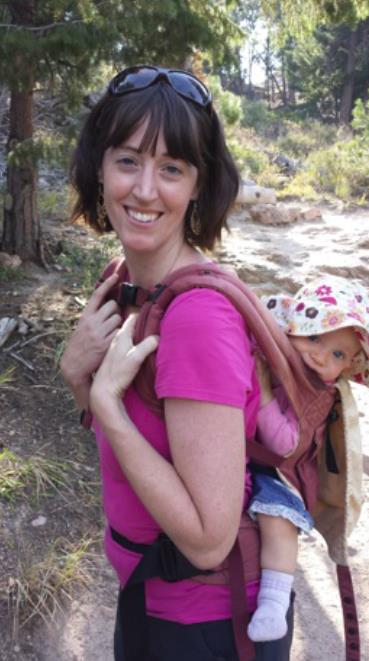The English Department Non-Tenure Track Faculty (NTTF) Committee does all kinds of good work. One good thing is their newsletter “In Addition…News from the English Department’s NTTF Committee.” One of the features of the newsletter, which is sent monthly to NTTF in the department, is a faculty profile, which they’ve agreed to let us share on the blog.
What name do you prefer to go by? Where are you located?
I go by Virginia and can be found in Eddy 341.
What courses do you teach at CSU? What (if any) courses have you taught before?
I teach both CO150 and CO300 here at CSU. Prior to coming to here I taught a freshman composition course at the University of Delaware for three years. I also taught special sections of that course for international students.
What part of teaching do you look forward to most?
Grading! Just kidding, of course. I think what I love most about teaching is that it is people-person job that requires a lot of problem solving and creativity. My favorite part is when students come see me for help. It’s so helpful to have the opportunity to listen to their questions and concerns before offering advice on their writing. So much learning can happen within just a ten-minute conversation!
What do you like to do when you are not teaching? What do you do for fun?
When I’m not teaching I’m usually at home with my kids (ages 6, 3 and 1) wondering how it’s remotely possible to spend so much time cleaning up after them and still have a house that looks like it’s in need of natural disaster relief. But when I can, I enjoy hiking (and really all things outdoors), cooking the occasional elaborate meal, dabbling in photography, and of course spending a lot of time with my family.
What accomplishments are you most proud of?
This was actually a harder question to answer than I had imagined it would be. If I really take the time to think about it, I’m proud of a collection of smaller accomplishments that have helped shape me into the person I am today. Some of those include going to college in the first place (I am the first in my family to do so), earning my master’s degree despite a couple “minor” interruptions (these include a year‐long deployment with my Army Reserve unit and later the arrival of our first daughter), commanding a company-level Army Reserve unit in my free time, and finally learning that a healthy and balanced life for me means the ability to discern the difference between what I am capable of and what I actually desire to do.
How would you explain a rhetorical triangle in three sentences to your eight-year-old nephew?
The Joker writes a letter to Batman asking for forgiveness for all of his past crimes. The Joker is one point of the triangle, Batman another, the letter a third point, and embedded within is the purpose of the letter, which of course is just a trick so that the Joker can continue on with his villainous ways. Surrounding all of this ridiculousness is the history between the two and any number of other contextual factors that would influence Batman’s response to the letter. But for more confusing fun, you could say the rhetorical triangle is not really a triangle at all. It’s simply a device for making a point. (Or should I say three points)? That’s not confusing, right?
(Thank you to Tatiana Nekrasova-Beker, TTRep on the committee, for interviewing Virginia.)
